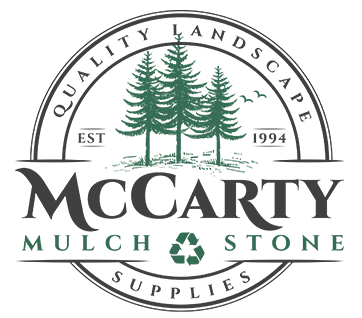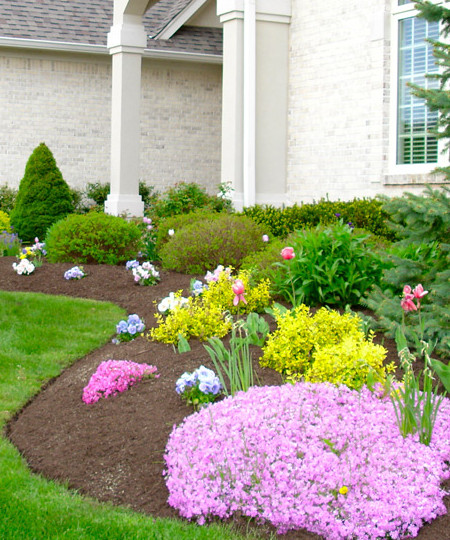Four Ways to Prepare Your Garden for the Winter
Your annuals are nearing the end of their lifespan and are starting to feel the cold grasp of the first frosts. After all your hard efforts in the spring and maintenance throughout the summer, it’s tempting to put away your tools and let nature take its course. After all that hard work, it’s time to relax, right? What more is there to do now that fall is here? The answer greatly depends on how smooth you want everything to be next spring. A little effort now could save you a lot more work in the long run. If you want to reduce the amount of work facing you next spring, consider the following suggestions to prepare your garden for winter’s rest.
Soil Testing and Cultivation
If you read our earlier blog post about soil, You’ll know how to test your soil for soil type and pH levels. Now is a great time to retest your soil since you’ve had a full growing season to see what amendments may be needed for next year. Understanding the effect your plants have had on the soil will give you great insight into the best ways to prepare your soil. Pay the most attention to pH levels as they are more likely to change than soil type from year to year due to the plants and fertilizer you chose.
Wait to Cultivate!
One of the main reasons soil feels loose and crumbly toward the end of the year is because it is saturated with summer’s growth of fungal hyphae and mycelium which will slowly decompose through winter, along with any roots from your flowers, veggies, and weeds. Digging up and turning the bed now without a good reason (such as preparing for an early spring salad garden) would ruin nature’s own efforts to build the soil for you. In fall it is more beneficial to mulch over beds without cultivating. Save it for the spring! It is, however, both acceptable and recommended (as needed) to disturb the soil to dig out those nasty perennial weeds.
Mulching
For many of us, mulch is as standard in our gardens as the plants themselves since covering the ground with it is one of the easiest ways we can beautify, protect and enrich the health of our plants. The reasons we mulch, and the type of mulch we use, however, changes with the seasons. We use mulch in the spring to feed and warm the soil, retain moisture in the soil, and to suppress weeds. We mulch in the autumn, in preparation for winter, for different reasons, though it does help suppress the hardy weeds that brave the cold. In areas where the temperature drops below freezing, any soil that is left exposed to the weather will be subject to the fluctuation in temperature that occurs mostly at the beginning and end of winter. These temperature changes cause movement in the soil that can heave out shallow rooted plants and expose delicate root systems to damaging freezes.
As strange as it may sound, the main reason for winter mulch is to protect the soil from the sun’s warmth. This is to keep the ground frozen and keep your plants in a state of dormancy. If there were a brief warm spell, it could trigger new growth which would only die again when the temperature drops.
If your garden is on a slope, mulching for the winter also prevents erosion and compaction of the exposed soil from heavy rains.
For proper insulation, build a layer two to four inches of mulch. For fall/winter mulching, you will want a course, textured mulch that will allow enough air and water to flow through while still being able to insulate effectively. Wood mulch is the best choice since it serves as a food source for beneficial micro-organisms and earthworms and can be cultivated into the ground once spring rolls around. For best results, apply over a layer of compost.
The best time to apply mulch depends on what type of plants are grown in your garden. Annual beds should be mulched in the fall before the first frost. For perennial beds it is better to wait until after the first “killing” frost, but before the coldest temperatures set in. A “killing” frost is typically when the temperatures fall below 28 degrees Fahrenheit. Mulching a perennial bed too early can cause stress to the plant, weakening it and making it more vulnerable to the frost coming in the near future.
Be sure to leave a one to two-inch buffer between the mulch and the plant to prevent stress, six to twelve inches from the bases of trees, and three to four inches for shrubs.
Sheet Composting
Also known as sheet mulching is a technique that has been used for generations which involves introducing layers of organic material to the soil surface only. All the compost you’ve been collecting over the summer is likely finished and ready to be used and your garden which will be sitting empty until the spring could benefit from a thick surface layer under a cover of winter mulch. By the spring, the compost will be actively decomposing and releasing nutrients into the soil.
Clean Up Rotting and Finished Plants
Besides looking unkempt, dead or dying plants can harbor funguses, disease, and pests. Add them to your compost pile for next year. Because many plant-eating insects lay eggs on your plants, removing them from your garden can prevent those insects from getting a head-start next spring.
Now is also a great time to remove invasive weeds that may have taken hold over the growing season.
Follow as many of these suggestions as it applies to your garden and your soil and plants will love you in the spring!




